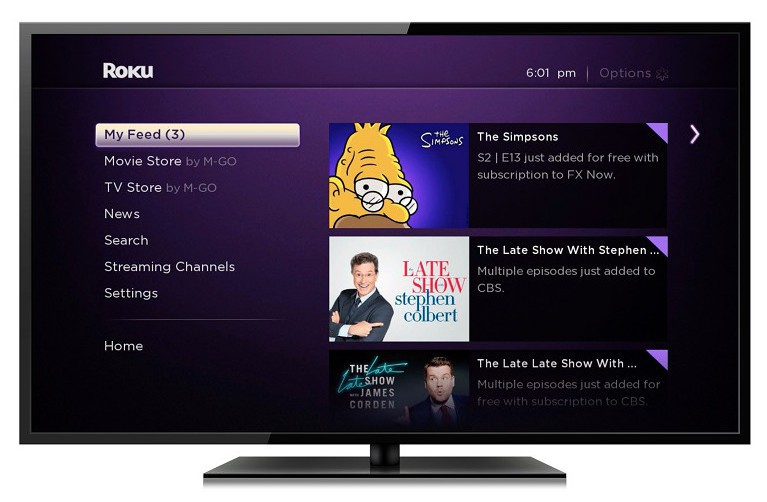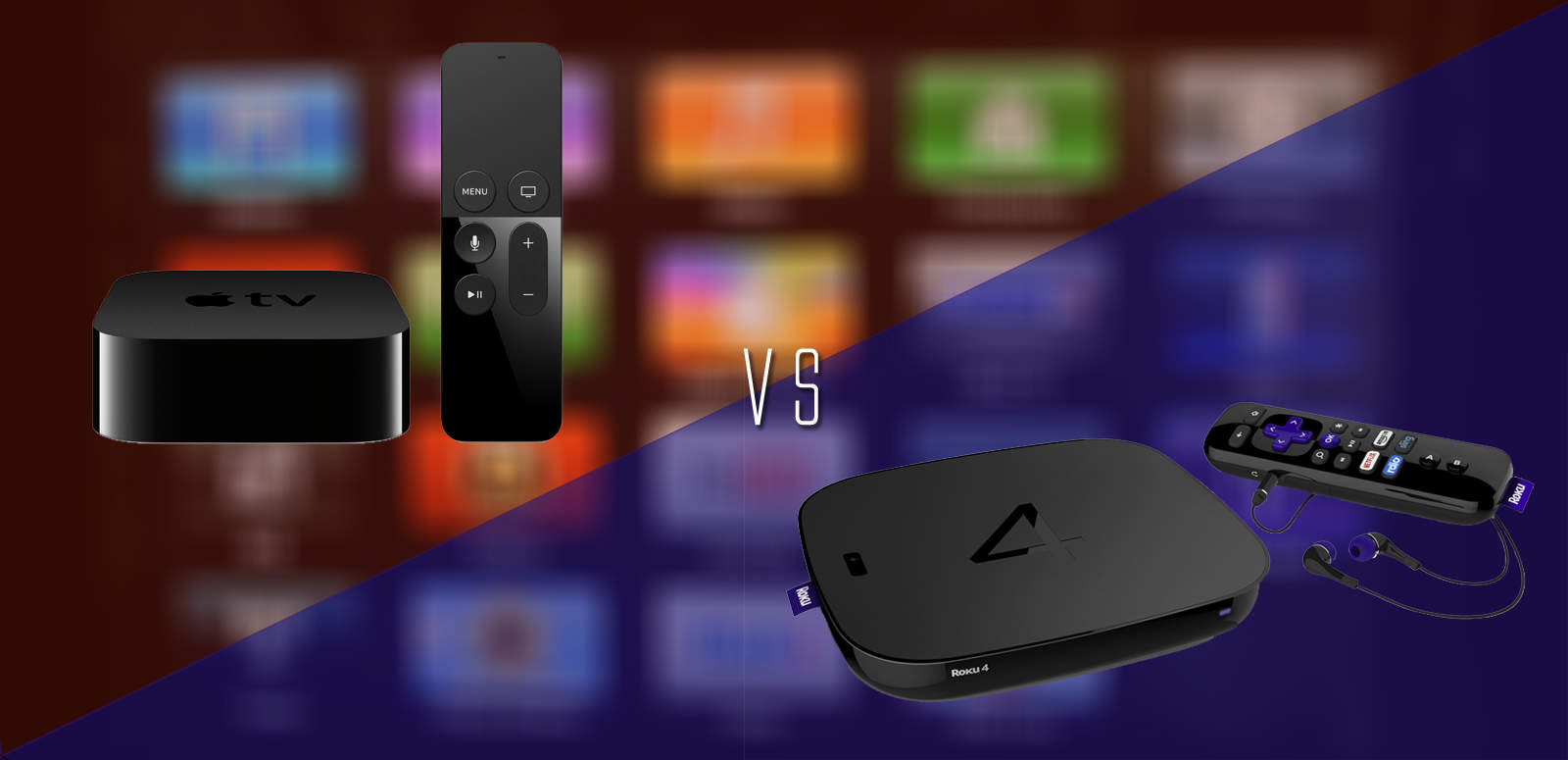Those on the lookout for a new streaming box this fall will have a tough decision to make when the fourth-generation models of both Apple TV and Roku hit the market. And while they both have some solid features, which one you end up buying depends a lot on what you already own.
Here’s how the two streamers measure up.
Size
Let’s start basic: Which one is going to take up more space in your entertainment center? Maybe it doesn’t matter to most people, but I have four gaming systems, a cable modem, a router, and an HDMI hub on there already as well as the TV itself. Space is at a bit of a premium in my living room, so every square inch could end up counting.
Roku 4’s tech specs list dimensions of 6.5 x 6.5 x 0.8 inches — and a weight of 0.9 pounds, if that matters — while the Apple TV is a smaller (but taller) 3.9 x 3.9 x 1.4 inches. That translates to a footprint of 15.21 square inches for Apple’s box and 42.25 square inches for Roku’s. So the Roku 4 is going to take up about three times as much shelf space as the Apple TV, which is about as superficial a comparison as we could make, but we have to start somewhere.
Resolution
Here is where the Roku 4 has an advantage over Apple TV provided you have the gear to support it. Roku’s box can stream 4K content at a resolution of 3840 × 2160, and it will upscale standard HD to 4K. Apple’s output tops out at 1080p. If you don’t have a 4K or Ultra HD TV, however, this won’t matter to you. But it’s cool that it’s there.

Photo: Roku
Remotes
Here’s something that will affect everyone: How do the control devices compare? The two versions have some pretty significant differences, starting with batteries. Roku 4’s remote runs on two AA batteries, while Apple TV’s sports a rechargeable pack that the company claims “[provides] months of battery life on a single charge.” Roku had no information about battery life on its remote, so we don’t know how charge times compare.
Roku 4’s controller includes a headphone port for “private viewing,” which is a pretty nice feature if you don’t have a set of wireless headphones and/or don’t want to run a cable to your TV. And if you lose the thing, as is wont to happen, you can ping it from a button on top of the box.
Both remotes have a voice interface, with Apple TV’s running a version of iOS’s personal assistant, Siri. And the presentation at Apple’s event last month showed off some really cool features that let you make incredibly specific requests of Siri, like rewinding a show and turning on captions with a single voice command.

Stuff that isn’t TV
The Roku 4 is made for streaming and maybe some gaming. But Apple’s being more ambitious with its box by incorporating it as the hub of its HomeKit smarthome framework. You’ll be able to use it to control your smart appliances and devices even when you’re not at home. And since the roster of HomeKit-enabled gadgets is finally expanding beyond plugs and into locks and thermostats, offsite control is getting to be a feature worth having.
Back on the gaming front, the Siri Remote has a touchscreen, accelerometer, and gyroscope that could make developing and playing games easier and more intuitive for those more accustomed to the mobile platform than dedicated consoles. But the Roku 4 sports a four-way directional pad that is likely going to be more precise than swipes. How they compare here is going to depend on developers using each console’s specific strengths in effective and creative ways, but they definitely have more options with Apple’s platform.
Price
This is what it all comes down to for a lot of people, and it’s another way that Roku is definitely ahead. The Roku 4 will cost $129.99 when it comes out at the end of the month. Apple TV has two versions depending on how much storage you want: The 32GB model will run $149, and the 64GB version will be $199.
If price is all you’re looking at, then you might want to save the 20 bucks. Roku is also quick to point out that its earlier models had a huge content advantage over earlier Apple TVs, but with a new OS and apps coming to Apple’s set-top, Cupertino could close that gap.
But we’re more excited about Apple TV’s extra-streaming features (and not just because of the nature of our site), so the difference in cost feels pretty justified. Still, it all depends on what you expect to get out of your set-top, and your priorities may differ. But for Apple fans who are already used to swiping and using Siri — and who also already have an extensive library of stuff on iTunes — it’s not really a tough decision.


